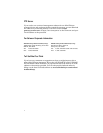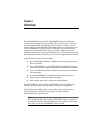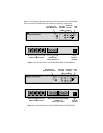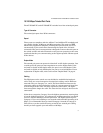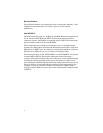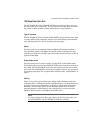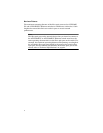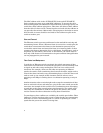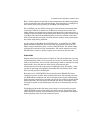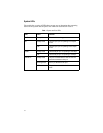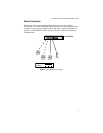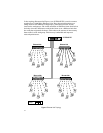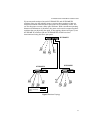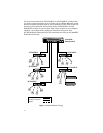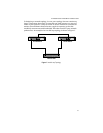8
The MAC address table in the AT-FS705E FC Series and AT-FS706E FC
Series switches can store up to 4,000 MAC addresses. To prevent the table
from becoming filled with addresses of end nodes that are no longer active, the
switch has a MAC address aging timer. This timer will delete a MAC address
from the table if it does not see a frame from the end node with the address on
any port after five minutes (300 seconds). The aging timer also helps to ensure
that the table is correct should an end node be moved from one port on the
switch to another port.
Store and Forward
The Ethernet switch uses store and forward as the method for receiving and
transmitting frames. When a Ethernet frame is received on a switch port, the
switch does not retransmit the frame out the destination port until it has
received the entire frame and stored the frame in its memory buffer. It then
examines the frame to determine if it is a valid frame. Invalid frames, such as
fragments, are discarded by the switch. In this manner, the switch ensures
that only valid frames are transmitted out its ports and that damaged frames
are not propagated on your network.
Flow Control and Backpresure
In order for an Ethernet switch to maintain the orderly movement of data
between the end nodes that are connected to its ports, it will occasionally need
to signal an end node to stop sending data. This can occur under several
situations. For example, when two end nodes are operating at different
speeds, the switch, while transferring data between the nodes, might need to
instruct the faster end node to stop transmitting data to allow the slower end
node to catch up. An example of this situation would be when a server
operating at 100 Mbps is sending data to a workstation operating at only 10
Mbps.
Another situation when a switch might need to stop the transmission of data
from an end node is if two end nodes are vying for the same switch port at the
same time. An example of this would be if two workstations were attempting
to send data to the same network printer simultaneously. The switch could
allow only one workstation to send out the port to the printer, and it would
need to instruct the other workstation to delay data transmission.
To some degree, these conflicts are avoided by the switch’s port buffers. These
buffers are used to store data when a port is either already busy transmitting
other data or when a transmitting port on a switch is operating at a slower
speed than the port on the switch receiving data.



